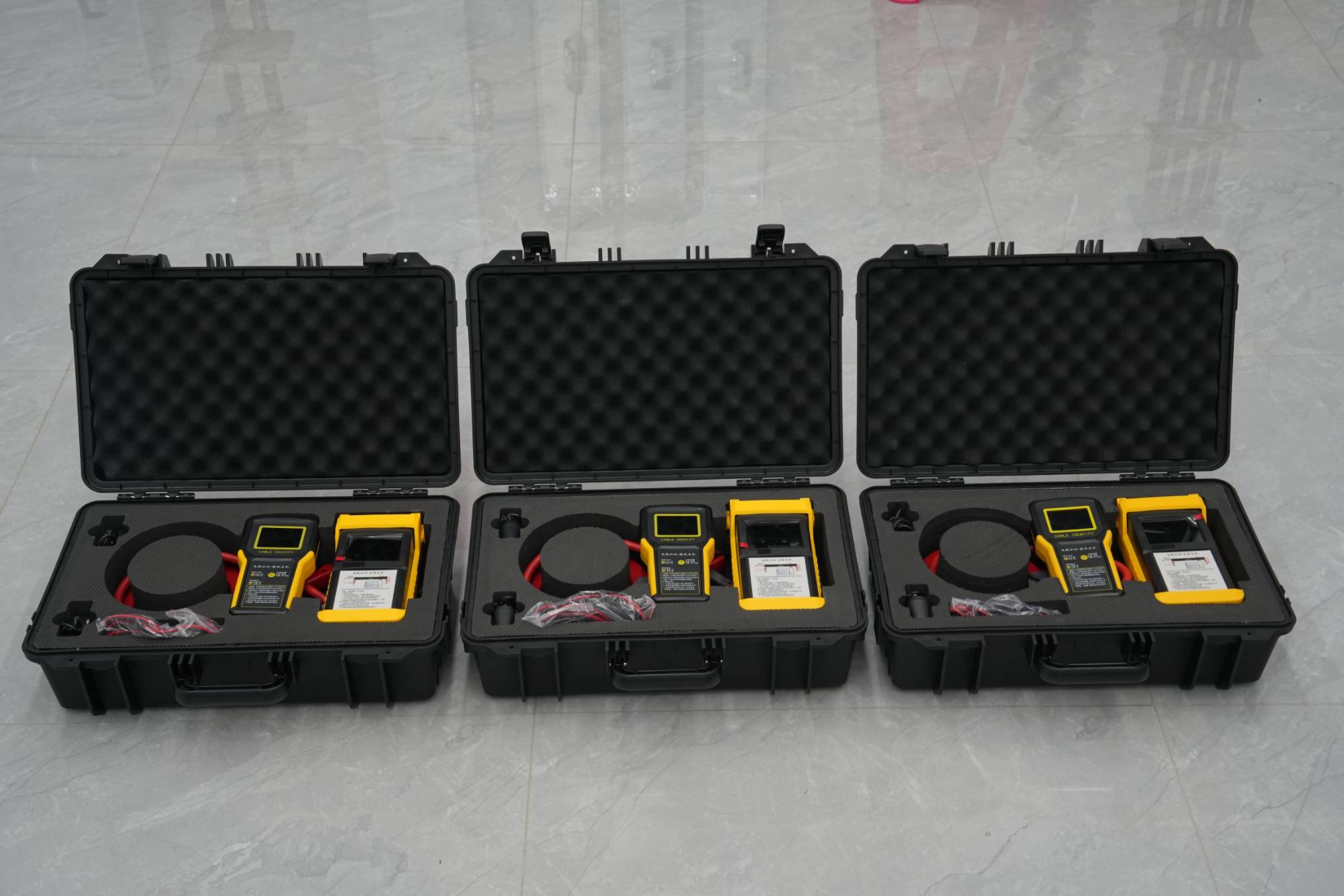The live cable identification deviceunder UHV power can help many power workers conduct various power tests more conveniently.

Cable identification devices are generally used to identify cables from a bundle of cables. It consists of a signal generator, a receiver with sensors, and wiring. It is a commonly used equipment for cable installation, migration, maintenance, and troubleshooting. According to usage conditions, cable identifiers can be divided into live cable identifiers and non live cable identifiers. Let's talk about their respective search and usage methods.
Search method for live cable identification instrument
When the line is live, we cannot affect normal operation. When identifying cables with points, induction method is used for measurement. High frequency signals are transmitted through calipers, and the receiver receives the signal characteristics and filters them through software and hardware before performing phase recognition. When the receiving calipers clamp the cable in the direction of current, the identified cable ammeter is biased to the right, accompanied by sound and light indicators.
And the current direction of other cables is opposite to that of the identified cable, with the ammeter pointer biased to the left. There is no sound or light indication. This reflects the uniqueness of the identified target cable. It is easy to distinguish the identified cable from multiple cables, as the signal current intensity on the identified cable is the same throughout the line, and the electromagnetic signal strength received by the receiving clamp along the cable is consistent. In principle, the identified cable is not limited by the length of the identified cable.
Search method for non electrified cable identification device
The search method for non electrified cable identification devices is basically the same as electrified identification. The generator feeds periodic unipolar voltage pulses into the cable to be identified, which needs to be grounded at the far end to ensure sufficient current flows through the cable. The direction of the pulse current fed into the cable can be used as an obvious identification standard.
The current flowing out only passes through this one cable, and all other adjacent cables are returning currents with opposite polarities. The direction and magnitude of the current flowing through the cable are detected by a receiver, which is connected in series with an amplifier in the circuit. The sensor clamps the cable under test, and the magnetic field generated by the current flowing through the cable induces a voltage in the sensor coil. The polarity of the voltage is determined by the direction of the current and the direction of the sensor coil, thus achieving the identification function of the cable.
At present, cable identification devices are playing an increasingly important role in cable fault diagnosis and maintenance, and are being used by more and more power companies or maintenance personnel. The above is an introduction to the search methods for cable identification devices by the editor. Different methods have different requirements, and we hope it can be helpful to friends.



















